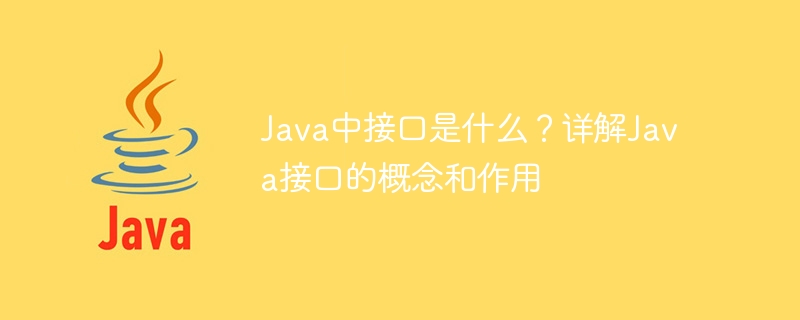

What is an interface in Java? Detailed explanation of the concept and function of Java interface requires specific code examples
In Java, interface (Interface) is an abstract data type that defines the specifications of a set of methods without giving a specific implementation. . An interface can be regarded as a contract. Any class that implements the interface must abide by this contract and implement all methods defined in the interface.
The interface is defined as follows:
public interface InterfaceName {
// 声明方法,没有方法体
returnType methodName(parameterList);
}The methods in the interface are public by default, so you do not need to write access modifiers when declaring. The methods in the interface have no method body, only the declaration of the method, and no specific implementation.
The main functions of the interface are as follows:
1. Declaration specification: The interface defines a set of method specifications. Through the interface, you can tell other classes which methods should be implemented. Interfaces can act as a constraint, making the code more standardized and readable.
2. Implement polymorphism: Interface allows multiple classes to implement the same interface, thus achieving polymorphism. Through interfaces, we can define a set of methods with similar functions and then use different implementation classes to implement these methods.
3. Reduce the degree of coupling: Interfaces can reduce the degree of coupling between classes. A class can implement multiple interfaces at the same time, so that it can achieve a combination of multiple functions instead of relying on a single inheritance relationship.
The following uses a specific example to illustrate the use of interfaces:
// 定义一个接口
public interface Animal {
void eat();
void sleep();
}
// 实现接口
public class Dog implements Animal {
@Override
public void eat() {
System.out.println("狗在吃东西");
}
@Override
public void sleep() {
System.out.println("狗在睡觉");
}
}
public class Cat implements Animal {
@Override
public void eat() {
System.out.println("猫在吃东西");
}
@Override
public void sleep() {
System.out.println("猫在睡觉");
}
}
// 测试类
public class AnimalTest {
public static void main(String[] args) {
Animal dog = new Dog();
dog.eat();
dog.sleep();
Animal cat = new Cat();
cat.eat();
cat.sleep();
}
}In the above example, we define an Animal interface, which defines two methods: eat and sleep. Then we implement this interface through the Dog class and Cat class. In the test class AnimalTest, we created a Dog object and a Cat object respectively, and called their eat and sleep methods.
Through the interface, we can classify the Dog class and the Cat class into one category. They both belong to the more abstract type of Animal. This design method makes the code structure clear and easy to expand and maintain. In addition, if we need to add a new animal class, we only need to implement the Animal interface, and there is no need to modify the original code.
In summary, an interface in Java is an abstract data type that defines a set of method specifications. By implementing interfaces, you can achieve polymorphism and reduce coupling between classes. The role of interfaces in Java is very important and needs to be used flexibly in actual development.
The above is the detailed content of What is an interface in Java? Detailed explanation of the concepts and functions of Java interfaces. For more information, please follow other related articles on the PHP Chinese website!




